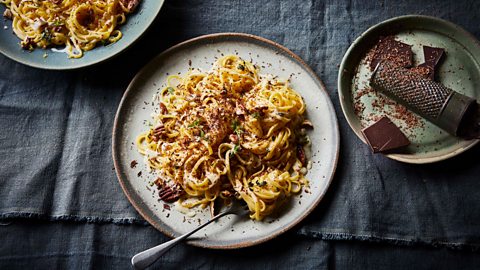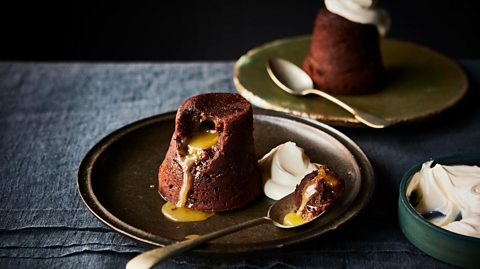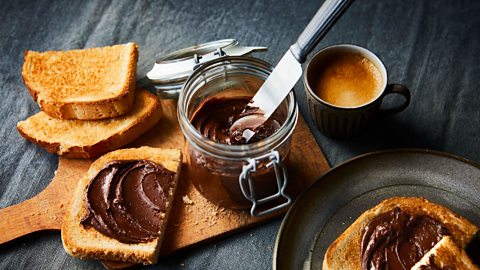Delicious things you never thought to do with chocolate
by Sue Quinn
Fine dark chocolate has one of the most complex flavours of any food. So why do most of us confine it to cakes, bakes and sweet treats?
When unprocessed, cacao beans contain over 600 aroma compounds (volatile molecules that enable us to detect flavour). Fine chocolate has an array of subtle flavours, from fruity, floral and herbal to roasted, nutty and cheesy. And we can harness these in the kitchen to form delicious partnerships with many more ingredients than most of us consider.
Yet until 20 years ago, the only chocolate sold in Britain was mass-produced and sweet. Often it contained added sugar, milk and additives, and had a single brownie-like flavour note. Then the craft chocolate revolution came along. Makers in France, followed by the US, discovered how to create complex, nuanced chocolate by teasing out, rather than covering up, the natural flavour of cacao beans. A new world of chocolate тАУ and culinary possibilities opened up.
Like wine, the best chocolate reflects the climate, soil and other environmental factors (the тАШterroirтАЩ) of the region where the cacao beans grow. It also carries the fingerprints of the skilled тАШbean to barтАЩ or тАШcraftтАЩ makers who carefully ferment, dry, roast and process the beans to showcase their best characteristics.
Food scientists can now explain why chocolate pairings that might sound peculiar work so well: ingredients that share aroma compounds taste good together. For example, blue cheese has more than 60 aroma molecules in common with dark chocolate (also known as plain chocolate in the UK and semisweet and bittersweet in the US). Combining them in the right proportions magnifies and enhances their flavours.
Similarly, chocolate and tomatoes share green and savoury aroma compounds, and chocolate smooths out tomatoesтАЩ acidity. ThatтАЩs why a little dark chocolate grated into tomato soup, or the classic Sicilian vegetable stew caponata, makes the dishes come alive.
Chocolate also contains caramel and roasted notes, which makes it particularly suitable for pairing with red meat and poultry. A swarthy square or two of dark chocolate added to a sauce or gravy for roast meat will add depth and richness.
The same vegetal compounds detected in dark chocolate are also found in cooked broccoli, beetroot, butternut squash and courgettes. By adding some of these vegetables to chocolate cakes and brownies, you ramp up the flavour while increasing your vegetable intake.
Dark chocolate contains fruity flavours, too тАУ some connoisseurs prize bars from Madagascar for their fruity notes тАУ so it pairs with many fruits, especially tropical varieties, berries and citrus. In the same vein, chocolate sings with the spice sumac, which is noted for its fresh lemony tang.
The subtle chocolate flavour and crunch of cacao nibs
Chocolate can also bring brightness and contrast to a dish through its bitterness. Cacao nibs (broken up, toasted cacao beans) are ideal for this. An under-valued, versatile ingredient, they are now widely available and worth seeking out. They add piquancy to dressings тАУ stir a small spoonful or two into a vinaigrette тАУ and are a welcome contrast sprinkled over salads studded with fruit (figs and blackberries especially) and soft cheese. Stone fruits, such as nectarines, poached in a sweet boozy syrup, also love cacao nibs because they add gentle bursts of contrasting bitterness.
Cacao nibs bring a subtle chocolate flavour and soft crunch when sprinkled into porridge or granola. Or you can grind them into sea salt in a coffee or spice grinder, adding another flavouring such as dried smoky chillies, dried herbs or spices, or dried citrus peel, if you wish. Blitz to a fine powder and add a spoonful to whatever is in your cooking pot.
Perhaps the simplest unusual way to serve chocolate is to make space for a few dark squares on your cheeseboard. Chocolate showcases the gloriously nutty notes in Gruy├иre or Comt├й, for example, and the maltiness of Brie. Or make crackers for cheese, folding chopped cacao nibs through the dough.
The rich history of chocolate pairings
Ancient civilisations in the Americas mainly sipped chocolate as a drink, but they also understood that its complex flavour made an excellent addition to food. Archaeological evidence indicates that 2500 years ago cooks were pairing chocolate with ingredients like turkey and fish, and tamales тАУ savoury dishes cooked in corn husks.
When chocolate eventually flowed into Europe in the 18th century, it found its way into the cooking pot, too. Catalan cooks added it to picadas тАУ sauces made with crushed garlic, almonds, fried bread and olive oil. Some traditional picada recipes still include chocolate. Italian chefs in wealthy homes also brandished chocolate in savoury food, including pasta and polenta, and even liver dishes. These chefs understood that just like other seeds commonly used in cooking, such as fennel, cardamom and caraway, chocolate could enhance many dishes, both savoury and sweet.
ThereтАЩs no question that chocolate deserves its starring role in decadent cakes, bakes and puddings. But its talents are so much more versatile.



